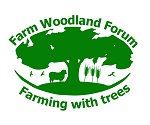According to the EU's AGFORWARD project, agroforestry can be defined as "the deliberate integration of woody vegetation (trees and/or shrubs) as an upper storey on land, with pasture (consumed by animals) or an agricultural crop in the lower storey. The woody species can be evenly or unevenly distributed or occur on the border of plots. The woody species can deliver forestry or agricultural products or other ecosystem services (i.e. provisioning, regulating or cultural)".
Agroforestry can take place at a range of scales, from individual fields to entire landscapes. At farm and landscape scale it can be implemented in systems that are able to diversify production (e.g. food, forage, timber and fuelwood) and provide ecosystem services (e.g. soil restoration, water preservation, climate regulation, and biodiversity enhancement), thus increasing both resilience and profitability.
Mosquera-Losada et al. (2016) describe five main types of agroforestry system. The two traditional descriptions of agroforestry in the temperate zone are as silvopastoral (integrating woody vegetation into forage and animal production) and silvoarable (widely spaced woody vegetation intercropped with annual or perennial crops). Both systems can integrate trees through hedgerows, shelterbelts, isolated/scattered trees, and copses. Silvopastoral systems are more suited to denser planting i.e. woodland grazing, whereas silvoarable systems typically use rows of sparsely planted trees in alley cropping. The other three agroforestry systems are a) hedgerows, windbreaks and riparian buffer strips b) forest farming c) home gardens or kitchen gardens. Home gardens tend not to be important in the temperate zone.
There can be some overlap between the five systems, as hedgerows, windbreaks and riparian buffer strips can be combined with arable land (silvoarable) or grasslands (silvopastoral). Other systems can be less easy to define; growing trees for timber or fruit with a bioenergy crop such as miscanthus is obviously silvoarable agroforestry, but growing timber trees with short rotation coppice willow for bioenergy is less easy to classify.
Further detail about the three most common types of agroforestry, hedges and windbreaks, silvoarable, and silvopasture, can be found on the menu to the left.
